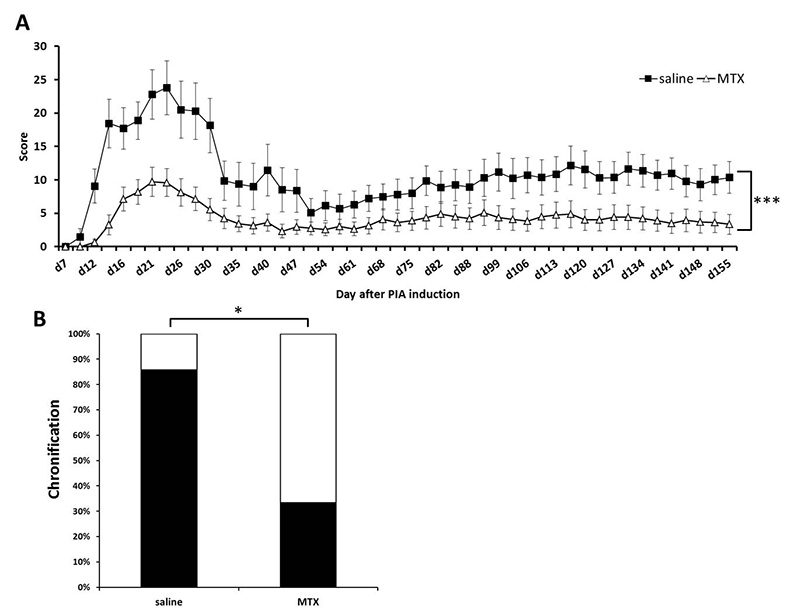Species
Rat
Fields of application
Pristane induced arthritis (PIA) in the rat is a well characterized animal model for rheumatoid arthritis (RA) in man. PIA is induced by intradermal injection of pristane into the tail base. Within some days animals develop arthritic symptoms in the limbs (incidence ≥ 95 %). PIA in the rat is a model for RA and is characterized by an acute phase followed by a relapsing-remitting chronic course. Therefore symptoms can be monitored as long as requested only limited by the lifespan of the animals. Assessment of clinical symptoms is realized by means of an established scoring system.
- Pharmacodynamics and pharmacokinetics
- (Patho)physiological processes
- Therapeutic efficacy
- Proof of concept
Endpoints / outcome parameter
- Score (severity of symptoms; in vivo)
- Immune cells in full blood (in vivo)
- Cytokines and RA marker protein levels in blood plasma (in vivo)
- Swelling, destruction, pannus formation, immune cell infiltration (ex vivo)
- Halogenating activity of myeloperoxidase (MPO; in vivo)
Readout parameter
- Scoring
- Flow cytometry
- ELISA/CBA (cytometric bead array)
- RT-PCR
- Western Blot
- Histology (various classical histological stains)
- Immunohistochemistry
- MPO activity assay
Quality management and validation
- Controls
- Blinded induction
- Blinded data collection and analysis
- Randomisation
- Allocation concealment
- Biometric expertise
- Internal quality management
References
Cooperation project with Nuvo Research GmbH (Leipzig): "Die Entwicklung des Wirkstoffes WF10 zu einer innovativen Arzneimittel-Plattform zur Therapie chronisch inflammatorischer Erkrankungen"
Cooperation project with Translational Center for Regenerative Medicine (TRM; University of Leipzig), Working group of Dr Jörg Flemmig: "Analyse der Myeloperoxidase bei Pristan-induzierter Arthritis in Dark Agouti Ratten"
Lange F, Bajtner E, Rintisch C, Nandakumar KS, Sack U, Holmdahl R. Methotrexate ameliorates T cell dependent autoimmune arthritis and encephalomyelitis but not antibody induced or fibroblast induced arthritis. Ann Rheum Dis. 2005; 64(4):599-605.
Flemmig J, Schwarz P, Bäcker I, Leichsenring A, Lange F, Arnhold J. Rapid and reliable determination of the halogenating peroxidase activity in blood samples. J Immunol Methods. 2014; 415:46-56
Leichsenring A, Bäcker I, Furtmüller PG, Obinger C, Lange F, Flemmig J. Long-Term Effects of (-)-Epigallocatechin Gallate (EGCG) on Pristane-Induced Arthritis (PIA) in Female Dark Agouti Rats. PLoS One. 2016 11(3):e0152518.
Flemmig J, Schwarz P, Bäcker I, Leichsenring A, Lange F; Arnhold J. Fast and specific assessment of the halogenating peroxidase activity in leukocyte-enriched blood samples. JoVE. Accepted.
